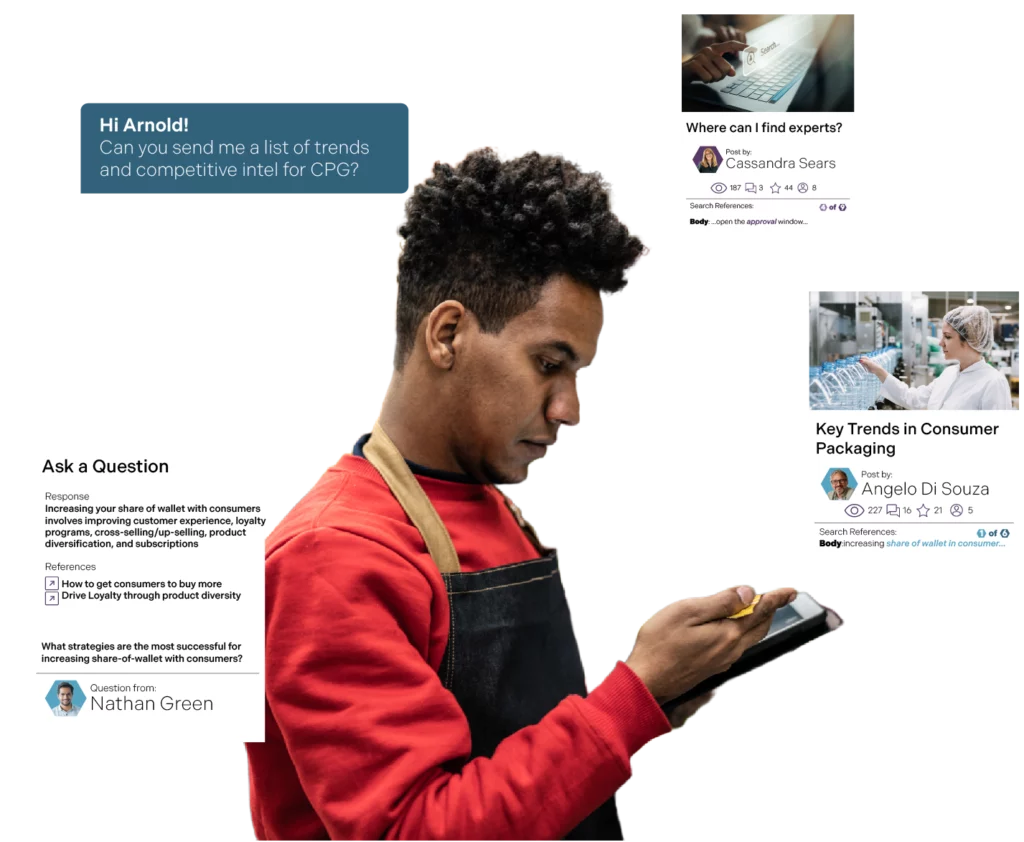Bring together data-driven customer-related resources, market research, competitive analysis, internal expertise, and more in one accessible insights management platform. Using a powerful insights management platform like Bloomfire, you can go beyond data aggregation and connect departments with valuable customer insights.
Centralizing your customer intelligence into a unified software platform ensures all stakeholders understand the customer landscape. You can harness the power of all your data in one accessible location.









